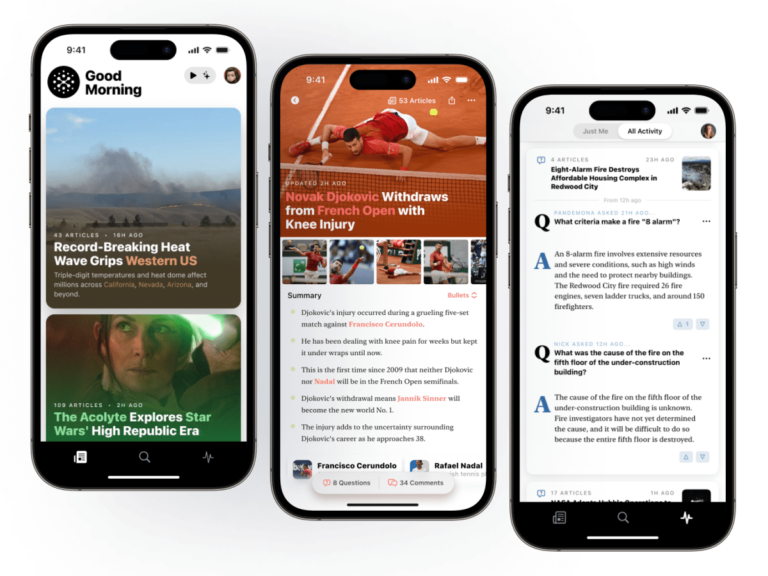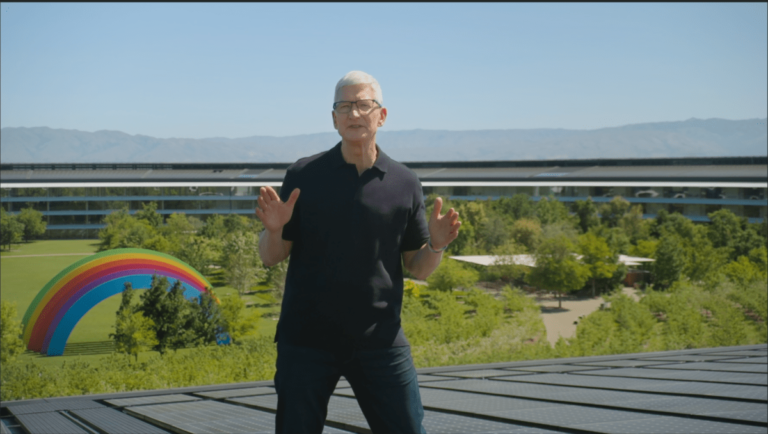
YouTube announced this week the rollout of “Thumbnail Test & Compare,” a new tool for creators to see which thumbnail performs the best.
When creators publish a new video (or update an existing video), they can test up to three thumbnails, which will be shown “evenly” across viewers, the company explained in a post.
YouTube encourages testing thumbnails with distinct differences, such as variations in layout compositions, backgrounds, and text overlays, to ensure a comprehensive test.
Creators can test thumbnails on a variety of content, including regular videos, podcast episodes, archived livestreams, and public long-form content.
Over the coming weeks, Thumbnail Test & Compare will become available in YouTube Studio on desktop to all creators with access to advanced features.

Traffic is down, newsrooms are undergoing layoffs, and publishers fear that AI technologies will only make matters worse.
Entering the fray, news reader startup Particle is teaming up with publishers to seek out a new business model for the AI era, where AI summaries of news don’t have to mean lost revenues.
Now, the company is bringing its first publishing partners into the mix to help it guide its next steps.
As a start, Particle now subscribes to Reuters newswire to help it deliver information about current events in the news.
What Particle isn’t yet ready to reveal is its business model.

At Apple’s WWDC 2024, the company revealed a handy new feature for Apple TV+ called InSight.
Apple TV+’s new feature appears to be similar to Amazon’s X-Ray technology, where Fire TV users get an overview of actor bios and behind-the-scenes information while watching TV shows and movies.
To use “InSight,” Apple TV+ subscribers can use their remote to bring up a display with actor names and character information in real-time.
Apple also announced several updates to tvOS, the software running on Apple TV.
According to the company, there will be better vocal clarity over background noise, music, and action scenes on Apple TV 4K.

The latest version is MacOS Sequoia.
Notifications on Mac bring up iPhone mirror mode, and iPhone audio comes through the Mac as well — but the paired iPhone stays locked.
Elsewhere, MacOS Sequoia introduces automatic window tiling, and a presenter preview mode for video conferencing with a built-in background replacement.
On the gaming front, Apple announced Game Porting Toolkit 2, the newest version of its game porting toolkit.
The MacOS Sequoia beta will be available this month, with final releases to come this fall.

Developers who want to show off apps, or anyone whose iPhone is currently out of reach, will appreciate a new Continuity feature arriving on the new version of macOS Sequoia.
The new OS, announced at WWDC 2024, will allow users to mirror their iPhone screen directly on their Mac and even control it, like swiping through pages on the Home Screen and launching apps via the Mac’s trackpad.
In addition, as Apple showed, it would make it easier to use Mac apps and iPhone apps alongside each other.
When using the feature, users will be able to use the Mac keyboard to enter text and other input into iPhone apps.
Plus, iPhone notifications will appear alongside Mac notifications when it’s mirrored, and users will also be able to interact with them and take action.

New York’s state legislature has passed a bill that would prohibit social media companies from showing so-called “addictive feeds” to children under 18, unless they obtain parental consent.
The Stop Addictive Feeds Exploitation (SAFE) for Kids Act defines an addictive feed as one where the content is recommended or prioritized based on information about the user or the user’s device — basically, these are the algorithmic news feeds used by most social apps.
“Non-addictive feeds,” a category that includes “feeds listed in chronological order,” would still be allowed.
“New York is leading the nation to protect our kids from addictive social media feeds and shield their personal data from predatory companies,” Governor Hochul said.
It would also prohibit platforms from sending notifications related to these feeds between the ages of midnight and 6am without parental consent.

Twitch has come up with a solution for the ongoing copyright issues that DJs encounter on the platform.
Participating DJs in the program must contribute a percentage of their earnings from streams to cover some of the music rights costs.
Twitch partnered with all major labels to bring a majority of popular music to the offering, including Universal Music Group, Warner Music Group, and Sony Music, as well as several independent labels represented by music licensing partner Merlin.
Additionally, a one-year subsidy is being offered to existing Twitch DJs, providing financial support and a transition period to adapt to the new program.
Twitch will soon require DJs to share part of their revenue with the music industry.

It’s been 20 years since Shira Yevin, the lead singer of punk band Shiragirl drove a pink RV into the Vans Warped Tour grounds, the now-defunct punk rock festival notorious for being male-dominated.
After Shiragirl Stage, Yevin went on a “lifelong crusade for carving out a space for women in music and other male-dominated industries,” she told TechCrunch.
This began with the launch of Gritty in Pink in 2020, a Live Nation-backed platform designed to empower women in the music industry.
Like freelance platforms Fiverr and Upwork, users can publish listings to highlight their services on InPink’s marketplace and connect with major brands.
Yevin said InPink is already working with one sports client, Angel City Football Club (the LA-based women’s soccer league), to help them hire talent for pre-shows.

Amazon is acquiring some assets of MX Player, but not the entire firm, which also counts Tencent among its backers.
TechCrunch reported in February last year that Amazon and MX Player were engaging for a deal.
MX Player is especially popular among such demographic groups, and Amazon’s e-commerce service has long only been popular among the urban city consumers.
An Amazon spokesperson confirmed it has agreed to purchase some assets of MX Player after publication of this story.
Following the acquisition, Times Internet made strategic moves to transform MX Player from a local video playback app into a comprehensive video streaming platform.

Stability AI, the startup behind the AI-powered art generator Stable Diffusion, has released an open AI model for generating sounds and songs that it claims was trained exclusively on royalty-free recordings.
Called Stable Audio Open, the generative model takes a text description (e.g.
Stability AI says that it’s not optimized for this, and suggests that users looking for those capabilities opt for the company’s premium Stable Audio service.
Stable Audio Open also can’t be used commercially; its terms of service prohibit it.
And it doesn’t perform equally well across musical styles and cultures or with descriptions in languages other than English — biases Stability AI blames on the training data.













